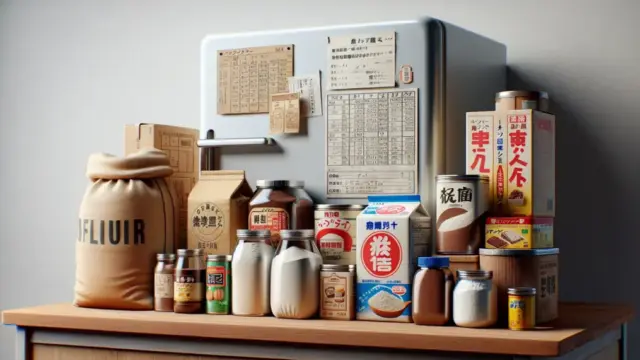The history of coffee in Brazil offers fascinating insights into how this beloved beverage has become deeply woven into the fabric of the country’s culture and economy. Coffee is more than just a drink; it has become an essential part of daily life for many Brazilians. In this article, we invite you to delve deeper into the allure of Brazilian coffee and discover tips on how to enjoy it even more.
We’ll take you through the beginnings of coffee cultivation in Brazil and discuss the significant impact it has had on society. Plus, we’ll share some helpful advice on selecting the right beans and brewing methods for your home enjoyment, so stick with us until the end!
- The Origins of Coffee Cultivation in Brazil and Its Impact
- The Process from Coffee Bean Cultivation to Processing
- Regional Differences in Coffee Culture and Enjoyment
The Historical Background of Brazilian Coffee
Brazil’s coffee history is more than just the discovery of a drink; it’s a fascinating narrative about how coffee was introduced to the country and how it has influenced Brazil’s culture and economy. For coffee enthusiasts, exploring this journey is incredibly intriguing. In this section, we’ll delve into the discovery and introduction of coffee, as well as the beginnings of its cultivation in Brazil. Let’s embark on this historical journey together.
Discovery and Introduction of Coffee
The origins of coffee trace back to Ethiopia, but it wasn’t until the early 18th century that coffee made its way to Brazil. Initially, coffee was primarily imported from France and Portugal. However, as awareness grew about Brazil’s rich soil and favorable climate for coffee cultivation, the country began to ramp up its production. Thus, Brazil gradually evolved into one of the world’s leading coffee-producing nations.
The rapid spread of coffee in Brazil was largely driven by the economic demands of the colonial era and the allure of coffee as a luxury item. As more people developed a taste for coffee and café culture flourished, Brazil established itself as a central hub for coffee production.
- Coffee’s origins are in Ethiopia
- Introduced to Brazil in the early 18th century
- Brazil’s climate and soil are ideal for cultivation
The Rise of Coffee Cultivation in Brazil
The serious cultivation of coffee in Brazil began in the 19th century. During this period, coffee became a major export product, serving as a critical pillar of the economy. Particularly in states like Minas Gerais and São Paulo, large coffee plantations expanded, creating a significant number of jobs for workers.
Moreover, advancements in cultivation techniques led to the production of high-quality beans. As a result, Brazilian coffee gained international acclaim and became beloved worldwide. The growth of coffee cultivation had a profound impact on Brazil’s agriculture and social development.

If you found this article interesting, you might also like our in-depth piece on the history of coffee cultivation and its impacts: “The History of Coffee Cultivation: Its Journey and Influence”. It’s a great opportunity to broaden your knowledge not just about Brazil, but about coffee cultivation around the globe.
- Serious cultivation began in the 19th century
- Coffee became a major export product
- Large plantations expanded, creating job opportunities
The Coffee Production Process in Brazil
The journey of coffee production in Brazil goes far beyond just growing beans; it involves the dedication and hard work of many individuals. In this section, we’ll explore how coffee beans are cultivated and the processing steps that follow the harvest. By understanding the effort and ingenuity behind your cup of coffee, you can gain a deeper appreciation for its uniqueness.
Coffee Bean Cultivation
In Brazil, coffee is primarily grown in two varieties: Arabica and Robusta. Arabica beans are known for their rich flavor and are particularly sought after for high-quality coffee. On the other hand, Robusta beans are more resilient to diseases and are often used in lower-cost products.
Cultivation typically takes place at higher altitudes, where a warm climate and adequate rainfall are essential. Farmers take great care to maintain soil quality by using appropriate fertilizers and managing pests effectively. This meticulous approach ensures that the coffee beans are nurtured properly and that their quality is preserved.
- Arabica and Robusta are the main varieties grown
- Cultivation is recommended at higher altitudes
- Farmers pay attention to soil quality and pest management
Harvesting and Processing
The harvesting of coffee beans is done by hand, selecting only the ripe cherries. This manual process is crucial for ensuring the quality of the beans. Once harvested, the beans are processed immediately to enhance their shelf life through drying.
There are two main processing methods: dry and wet. In the dry method, the entire fruit is sun-dried. Conversely, the wet method involves removing the beans from the fruit, washing them, and then drying them. Each method impacts the flavor profile, so farmers choose the one that best suits their specific farm conditions.
- Ripe cherries are harvested by hand
- Beans are processed immediately after harvesting
- Processing methods include dry and wet
The Cultural Significance of Coffee in Brazil
In Brazil, coffee is more than just a beverage; it is deeply intertwined with the nation’s lifestyle and culture. In this section, we will explore the role of coffee in Brazil and the cultural differences surrounding it across various regions. By understanding how enjoying a cup of coffee connects people and shapes regional identities, you can truly appreciate the allure of this beloved drink.
The Role of Coffee in Brazil
Coffee plays a vital role in Brazil, serving not only economic purposes but also fulfilling important social functions. It acts as a medium for interaction among family and friends, making it an essential part of everyday life. Whether it’s spending time at a café with friends or sipping coffee during family gatherings, these moments provide a comforting reprieve in a busy day.
Moreover, coffee has influenced Brazil’s culture and arts significantly. It frequently appears in music and literature, giving rise to stories that resonate with people’s hearts through the lens of coffee. In this way, coffee is woven into the fabric of Brazilian culture, enriching daily life with its presence.
- Coffee holds social as well as economic significance
- An essential part of interactions with friends and family
- A prominent theme in music and literature
Regional Variations in Coffee Culture
Brazil is an expansive country, and as such, its coffee culture varies widely from region to region. For instance, in Minas Gerais, there are special rituals for enjoying coffee, often paired with local ingredients. On the other hand, São Paulo boasts a thriving café culture, with numerous spots where diverse coffee styles can be savored.
The brewing methods and flavors also differ across regions, adding to coffee’s charm. In the northeast, for example, coffee with a strong sweetness is preferred, while in the south, coffee with a pronounced acidity is more popular. These distinctions arise from each region’s climate, environment, and individual preferences.
- Coffee culture varies by region
- Special rituals and ways of enjoying coffee in Minas Gerais
- Different tastes and preferences in the northeast and south
A Guide to Enjoying Brazilian Coffee
Brazilian coffee is beloved by many for its rich flavors and enticing aromas. In this section, we’ll explore how to choose the right beans, store them properly, and brew them to perfection. Use this guide to elevate your daily coffee experience!
Choosing and Storing Your Beans
When selecting Brazilian coffee beans, the first step is to understand your personal taste preferences. Arabica beans are known for their fruity acidity, while Robusta beans offer a bolder, more bitter flavor. Both types are delicious and cultivated in Brazil’s fertile soil, but their distinct tastes mean it’s worth trying both to discover your favorite.
As for storage, coffee beans are sensitive to moisture and light. It’s best to keep them in an airtight container stored in a cool, dark place. Once ground, the beans can lose their aroma quickly, so it’s recommended to enjoy freshly ground coffee whenever possible. These small steps can help you fully appreciate the unique flavors of Brazilian coffee.
- Choose beans that suit your taste
- Understand the differences between Arabica and Robusta
- Store in an airtight container in a cool, dark place
Optimal Brewing Methods and Enjoyment
There are several brewing methods to choose from, such as French press, drip coffee, and espresso, each bringing out different flavor profiles. The French press, in particular, is excellent for extracting the oils from the beans, making it a great choice for enjoying the rich flavors of Brazilian coffee.
When it comes to drinking, you might enjoy it simply black, or you can customize it with milk, cream, or sugar to suit your taste. Depending on the season, feel free to experiment with iced coffee or add spices for a twist. Take the time to find your own style and savor Brazilian coffee to the fullest.
- Choose your brewing method, like French press or drip
- Enjoy the rich flavors with a simple black coffee
- Experiment with seasonal variations and personal twists
Conclusion
Brazilian coffee offers us a wealth of charm through its rich history, vibrant culture, and unique production processes. By exploring everything from its discovery and cultivation methods to the cultural significance in different regions, you can enhance your coffee experience significantly. Particularly, by experimenting with the selection of beans and brewing techniques, you can create a one-of-a-kind coffee experience just for you.
Moreover, understanding the history of Brazilian coffee allows you to appreciate the hard work and passion of the people behind it, which is another compelling aspect. We encourage you to take this information to heart and enjoy Brazilian coffee to the fullest.
- Brazilian coffee is deeply rooted in history and culture.
- The enjoyment expands by experimenting with bean selection and brewing methods.
- Understanding regional coffee cultures can lead to new discoveries.
We invite you to give Brazilian coffee a try and discover your own unique ways to enjoy it. If you have any thoughts or questions about this article, please feel free to share them in the comments section!






































































Comment